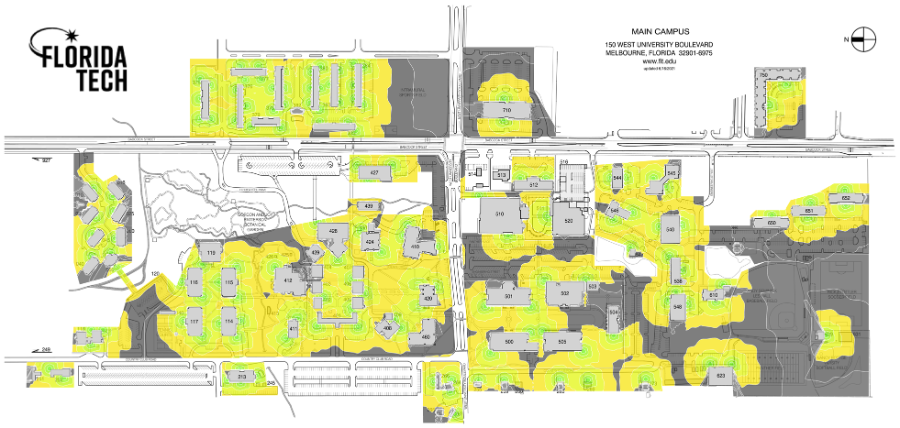Wireless Network
The current wireless infrastructure is a mix of 802.11g (54 Mbps), and 802.11n (300 Mbps), and 802.11ac (1300 Mbps). The 802.11g standard is backwards compatible with 802.11b. Any 802.11b, 802.11g, 802.11n or 802.11ac card will work in any of the current coverage areas.
Indoor Coverage Areas
Residence halls, academic buildings, administrative buildings, common areas, and event spaces are all covered with the campus wireless network Eduroam.
Outdoor Coverage Areas
Download the map below to view the current outdoor areas covered with the campus wireless network Eduroam.

Hardware Needed to Connect
Any 802.11b/g/n/ac Wi-Fi Compliant card is acceptable for connecting to the network. These cards can be purchased at any computer store. Most newer laptops have them already available with the system.
Access the Wireless Network
Please visit the Knowledge Base article to access the Eduroam wireless network.
Common Problems
Eduroam is a large-scale campus-wide hotspot designed to supply connectivity to the Internet and Florida Tech resources. Due to this intended deployment scenario, personal devices, designed for small personal and/or residential networks will not work properly. For example: The pairing of things like Amazon’s Alexa or Google Assistant with other smart devices is currently not supported. This also includes, casting devices such as Chromecast or AirPlay as well as Wireless printing over Eduroam.
When changing physical locations, devices shift their connection to the closest Wi-Fi Access Point (AP). On Wi-Fi networks, the decision to shift is determined by each device. Updating the firmware on devices can improve their ability determine when an AP shift is needed. Disabling and enabling Wi-Fi is one method to force the device to re-evaluate which AP to connect with and resolve connection issues caused by a devices not shifting to the closest AP.

 Give to Florida Tech
Give to Florida Tech 